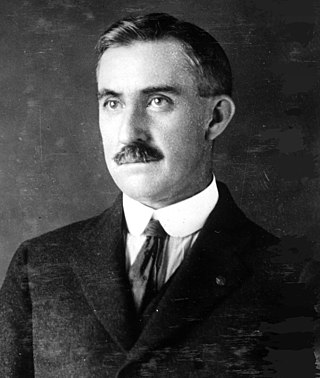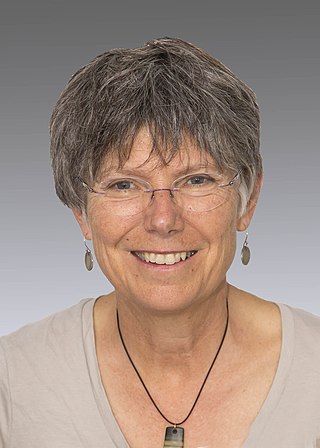Related Research Articles

An aquifer is an underground layer of water-bearing material, consisting of permeable or fractured rock, or of unconsolidated materials. Aquifers vary greatly in their characteristics. The study of water flow in aquifers and the characterization of aquifers is called hydrogeology. Related terms include aquitard, which is a bed of low permeability along an aquifer, and aquiclude, which is a solid, impermeable area underlying or overlying an aquifer, the pressure of which could lead to the formation of a confined aquifer. The classification of aquifers is as follows: Saturated versus unsaturated; aquifers versus aquitards; confined versus unconfined; isotropic versus anisotropic; porous, karst, or fractured; transboundary aquifer.

Resource depletion is the consumption of a resource faster than it can be replenished. Natural resources are commonly divided between renewable resources and non-renewable resources. The use of either of these forms of resources beyond their rate of replacement is considered to be resource depletion. The value of a resource is a direct result of its availability in nature and the cost of extracting the resource. The more a resource is depleted the more the value of the resource increases. There are several types of resource depletion, the most known being: Aquifer depletion, deforestation, mining for fossil fuels and minerals, pollution or contamination of resources, slash-and-burn agricultural practices, soil erosion, and overconsumption, excessive or unnecessary use of resources.

Groundwater is the water present beneath Earth's surface in rock and soil pore spaces and in the fractures of rock formations. About 30 percent of all readily available freshwater in the world is groundwater. A unit of rock or an unconsolidated deposit is called an aquifer when it can yield a usable quantity of water. The depth at which soil pore spaces or fractures and voids in rock become completely saturated with water is called the water table. Groundwater is recharged from the surface; it may discharge from the surface naturally at springs and seeps, and can form oases or wetlands. Groundwater is also often withdrawn for agricultural, municipal, and industrial use by constructing and operating extraction wells. The study of the distribution and movement of groundwater is hydrogeology, also called groundwater hydrology.

Hydrogeology is the area of geology that deals with the distribution and movement of groundwater in the soil and rocks of the Earth's crust. The terms groundwater hydrology, geohydrology, and hydrogeology are often used interchangeably.

The Edwards Aquifer is one of the most prolific artesian aquifers in the world. Located on the eastern edge of the Edwards Plateau in the U.S. state of Texas, it is the source of drinking water for two million people, and is the primary water supply for agriculture and industry in the aquifer's region. Additionally, the Edwards Aquifer feeds the Comal and San Marcos Springs, provides springflow for recreational and downstream uses in the Nueces, San Antonio, Guadalupe, and San Marcos river basins, and is home to several unique and endangered species.

Groundwater recharge or deep drainage or deep percolation is a hydrologic process, where water moves downward from surface water to groundwater. Recharge is the primary method through which water enters an aquifer. This process usually occurs in the vadose zone below plant roots and is often expressed as a flux to the water table surface. Groundwater recharge also encompasses water moving away from the water table farther into the saturated zone. Recharge occurs both naturally and through anthropogenic processes, where rainwater and/or reclaimed water is routed to the subsurface.

Overdrafting is the process of extracting groundwater beyond the equilibrium yield of an aquifer. Groundwater is one of the largest sources of fresh water and is found underground. The primary cause of groundwater depletion is the excessive pumping of groundwater up from underground aquifers.
The O.E. Meinzer Award is the annual award of the Hydrogeology Division of the Geological Society of America. Established in 1965, it is named after Oscar Edward Meinzer who has been called the "father of modern groundwater hydrology". The Meinzer award recognizes the author or authors of a publication or body of publications that have significantly advanced the science of hydrogeology or a closely related field.
James S. (Jay) Famiglietti is the director of the Global Institute for Water Security at the University of Saskatchewan in Saskatoon, Canada. Prior to that he was the Senior Water Scientist at NASA Jet Propulsion Laboratory in Pasadena, CA and a professor of Earth System Science at the University of California, Irvine. He is a leading expert in global water issues and in raising awareness about the global water crisis and in particular, about global groundwater depletion.

Oscar Edward Meinzer was an American hydrogeologist who has been called the "father of modern groundwater hydrology". He was awarded the William Bowie Medal in 1943. The O. E. Meinzer award is named for him. He collaborated with Norah Dowell Stearns, one of the first women hydrogeologists.
Mary Pikul Anderson is a hydrologist, geologist, and professor emerita of hydrogeology. She is a fellow of the Geological Society of America, the American Geophysical Union, and the National Academy of Engineering.
Shirley Jean Dreiss (1949–1993) was an American scientist working in the fields of hydrology and hydrogeology. After gaining her PhD from Stanford University, she joined the faculty of the University of California at Santa Cruz, where she became Professor and Chair of the Department of Earth Sciences. She made important contributions to the understanding of water flow through karst aquifers and fluid flow in subduction zones. At the time of her early death in a car accident, she was studying the groundwater system of Mono Lake in California. She was awarded the Birdsall Distinguished Lectureship from the Geological Society of America, which was renamed the Birdsall-Dreiss Distinguished Lectureship after her death.

Jennifer McIntosh is hydrogeologist and professor of hydrology and atmospheric sciences, university distinguished scholar at the University of Arizona. In 2019 she was named a Geological Society of America Fellow.
Norah Dowell Stearns (1891–Unknown) was an American hydrogeologist from Providence, Rhode Island. She was one of the earliest-known women to contribute to hydrogeology.

Barbara A. Bekins is a research hydrologist at the United States Geological Survey. She studies the environmental impact of a crude oil spill near Bemidji, Minnesota. She was elected a member of the National Academy of Engineering in 2020 for contributions to characterizing subsurface microbial populations related to contaminant degradation.

Abhijit Mukherjee is an Indian professor, scientist and currently Professor of Geology and Geophysics and the School of Environmental Science and Engineering of IIT Kharagpur. He has been selected for Shanti Swarup Bhatnagar Prize for Science and Technology in 2020 in the field of Earth Atmosphere Ocean and Planetary Sciences.

József Tóth is a hydrogeologist and Professor Emeritus of the University of Alberta in Canada and Honorary Professor at the Eötvös Loránd University in Budapest, Hungary.
Donald Ira Siegel is the emeritus Laura J. and L. Douglas Meredith Professor in the department of Earth Science at Syracuse University. He served as the president of the Geological Society of America from July 2019 until June 2020. Siegel is known for his work in wetland geochemistry and hydrogeology.
Beth L. Parker is a hydrogeologist and professor at the University of Guelph who has made exceptional contributions to the science and practice of Contaminant Hydrogeology and the protection of groundwater from contamination, that have been adopted internationally to protect water supplies in Guelph and many other communities.

Laura J. Crossey is an American hydrologist and geochemist and Distinguished Professor of Earth and Planetary Sciences at the University of New Mexico (UNM). Crossey is part of UNM's Sustainable Water Resources Grand Challenge team, which studies water and climate in New Mexico and other arid regions. She has studied springs and groundwater in areas including the Western Desert of Egypt, Australia's Great Artesian Basin, Tibet, the Middle Rio Grande Basin and the Grand Canyon.
References
- ↑ Full name and birth year from WorldCat Identities, accessed 2020-12-06
- 1 2 Presidents' Award, 2018: Dr Bridget R. Scanlon, International Association of Hydrogeologists, retrieved 2020-12-06
- 1 2 3 Bridget Scanlon Awarded Fisher Endowed Chair and NGWA Hubbert Award, Bureau of Economic Geology, University of Texas at Austin, January 11, 2017, retrieved 2020-12-06
- ↑ Ayala, Christine (June 2, 2015), "The Q&A: Bridget R. Scanlon", The Texas Tribune
- 1 2 3 4 Scientist Profile: Bridget Scanlon, University of Texas Jackson School of Geosciences, November 20, 2017, retrieved 2020-12-06
- 1 2 3 4 5 6 7 8 9 Curriculum vitae (PDF), December 6, 2020, retrieved 2020-12-06
- ↑ "Dr. Bridget R. Scanlon", Members, National Academy of Engineering, retrieved 2020-12-06
- ↑ List of past Birdsall-Dreiss Lecturers and respective Lecture(s), Geological Society of America, retrieved 2020-12-06
- 1 2 2019 O.E. Meinzer Award Presented to Bridget Scanlon, Geological Society of America, retrieved 2020-12-06
- ↑ M. King Hubbert Award recipients, National Ground Water Association, retrieved 2020-12-06